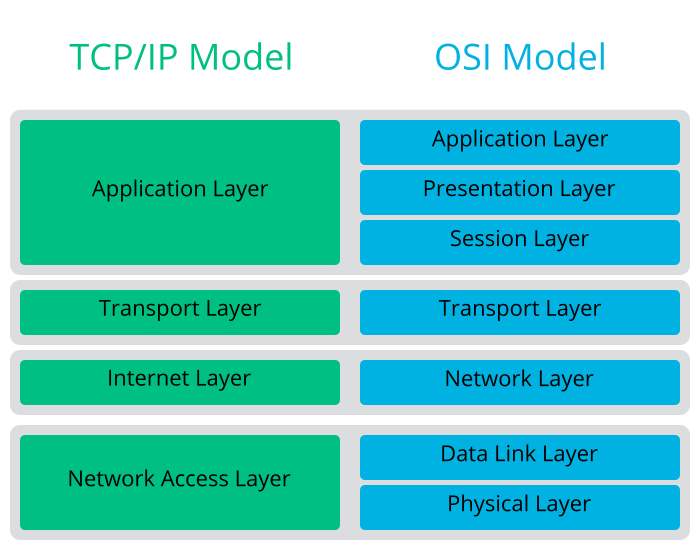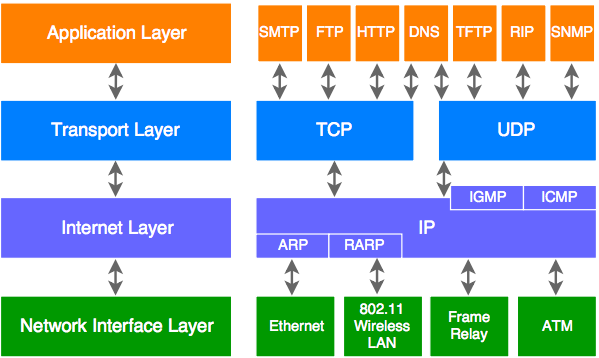TCP/IP Model

* Was created by the Department of Defense in the 1970s
* Is a reduced version of the OSI Model
* Is based on and around the TCP/IP Protocol suite.
- TCP/IP Model has four layers :
- Application Layer
- Transport Layer
- Internet Layer
- Network access or network interface layer
- All TCP/IP protocols are located on the top three layers.
- Protocols located on bottom layer are not part of the TCP/IP suite.
- Each layer corresponds to one or more OSI model layers.
Common TCP-IP Protocols

Layer 1 - Application Layer
1 | * Defines protocols, services, and processes that allow programs and users to interface with the network |
Common Application Layer Protocols :
- HTTP
- Telnet
- FTP
- TFTP
- SNMP
- DNS
- SMTP
- DHCP
- …
Layer 2 - Transport Layer
1 | * Provides communications session management between host computers |
Common Transport Layer Protocols :
- TCP
- UDP
- RTP
- …
Layer 3 - Internet Layer
1 | * Internet layer packages data into IP datagrams called packets |
Common Internet Layer Protocols :
- IP
- ICMP
- ARP
- RARP
- …
Layer 4 - Network Interface Layer
1 | * Sometimes called Network Access Layer. |
Standards Defined by This Layer :
- Ethernet
- Token Ring
- FDDI
- X.25
- Frame Relay
- RS-232
- V.35
- …